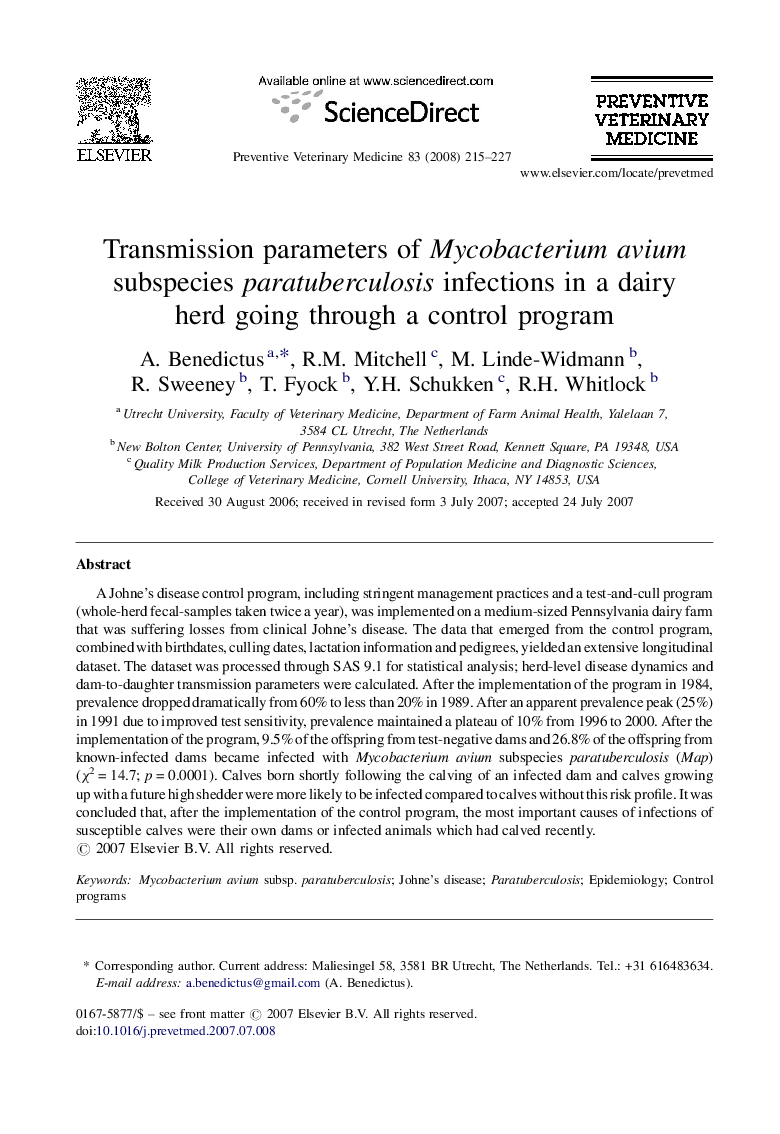| Article ID | Journal | Published Year | Pages | File Type |
|---|---|---|---|---|
| 5794293 | Preventive Veterinary Medicine | 2008 | 13 Pages |
Abstract
A Johne's disease control program, including stringent management practices and a test-and-cull program (whole-herd fecal-samples taken twice a year), was implemented on a medium-sized Pennsylvania dairy farm that was suffering losses from clinical Johne's disease. The data that emerged from the control program, combined with birthdates, culling dates, lactation information and pedigrees, yielded an extensive longitudinal dataset. The dataset was processed through SAS 9.1 for statistical analysis; herd-level disease dynamics and dam-to-daughter transmission parameters were calculated. After the implementation of the program in 1984, prevalence dropped dramatically from 60% to less than 20% in 1989. After an apparent prevalence peak (25%) in 1991 due to improved test sensitivity, prevalence maintained a plateau of 10% from 1996 to 2000. After the implementation of the program, 9.5% of the offspring from test-negative dams and 26.8% of the offspring from known-infected dams became infected with Mycobacterium avium subspecies paratuberculosis (Map) (Ï2 = 14.7; p = 0.0001). Calves born shortly following the calving of an infected dam and calves growing up with a future high shedder were more likely to be infected compared to calves without this risk profile. It was concluded that, after the implementation of the control program, the most important causes of infections of susceptible calves were their own dams or infected animals which had calved recently.
Keywords
Related Topics
Life Sciences
Agricultural and Biological Sciences
Animal Science and Zoology
Authors
A. Benedictus, R.M. Mitchell, M. Linde-Widmann, R. Sweeney, T. Fyock, Y.H. Schukken, R.H. Whitlock,
